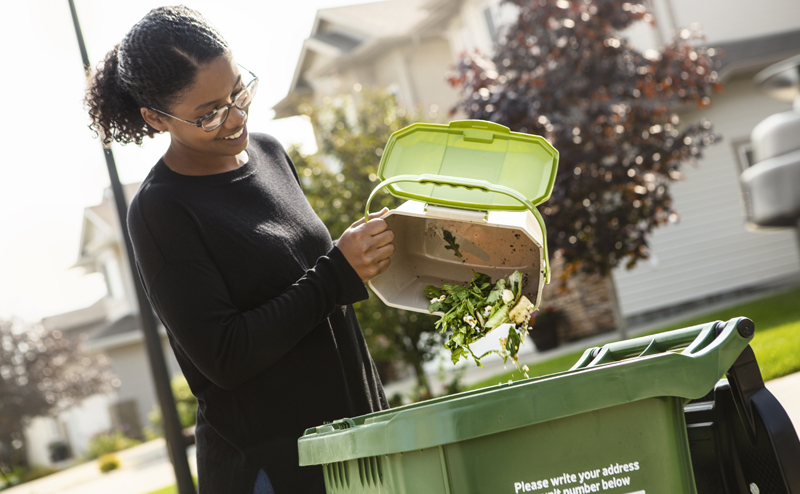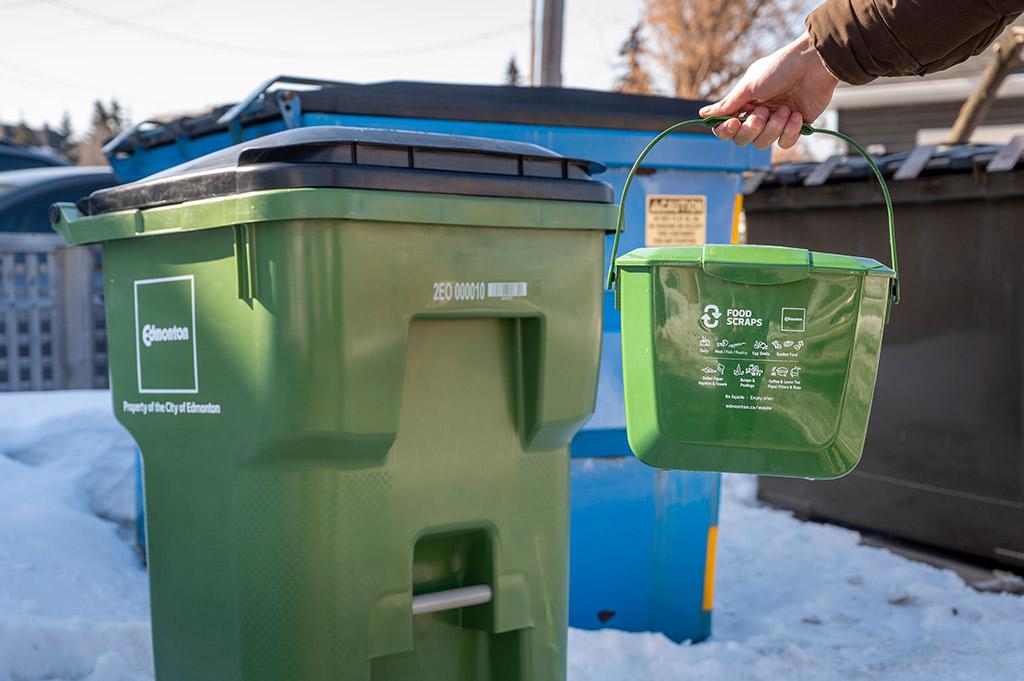All “compostable” plastics, including BPI/BNQ-certified
Compostable plastic items (such as cups, liners and bags) require higher temperatures and longer processing times than food scraps to compost. They do not break down in most industrial composting processes designed for food scraps. This includes the City’s processes and those of our regional partners.
Compostable plastic items are handled like regular plastic items. When food scraps arrive at the Edmonton Waste Management Centre, they are screened to remove plastic contamination. The screening machinery cannot tell compostable plastic items apart from regular plastic items, so all are removed and disposed of as garbage.
The only plastic items (regular or “compostable”) you should put in your food scraps are pail liners. These are ripped open to release food scraps at our processing facility, then sorted out as garbage.



